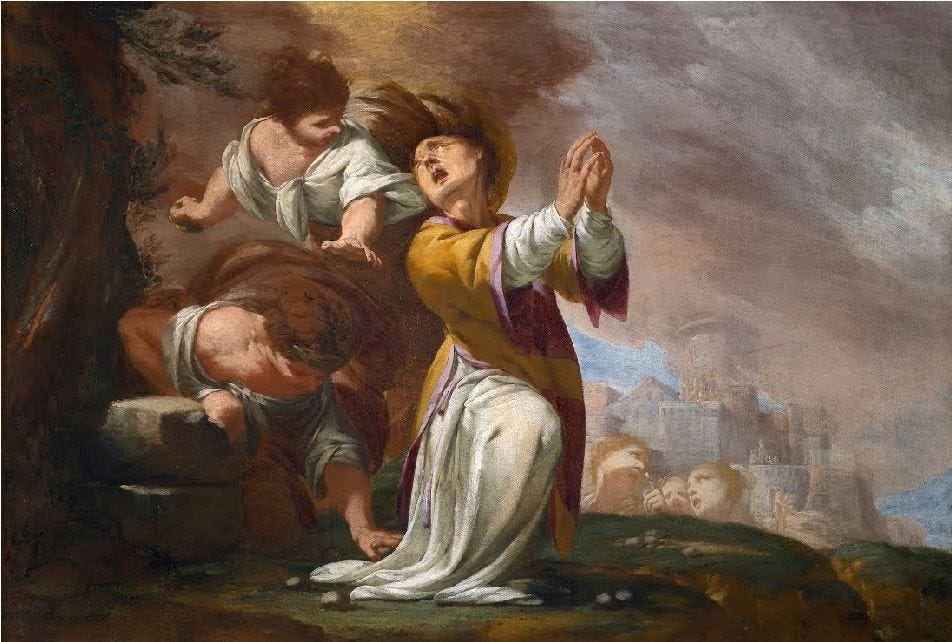The Stoning of Saint Stephen by Giovanni Battista Lucini
Today is the feast of St. Stephen, the first Christian martyr. It’s also known as the second day of Christmastide, Wren Day, and Boxing Day. According to the Acts of the Apostles, Stephen was a deacon of the early church in Jerusalem. His teachings angered the Jewish authorities and he was accused of blasphemy. At his trial, he gave a speech to the Sanhedrin accusing them of being “stiff-necked people” who ignored the Holy Spirit.
“Was there ever a prophet your ancestors did not persecute? They even killed those who predicted the coming of the Righteous One. And now you have betrayed and murdered him.”
Not surprisingly, Stephen was found guilty, cast out of the city, and stoned to death. Saul of Tarsus, before his conversion on the road to Damascus, was a witness, the young man at whose feet the stone throwers laid their coats.
Stephen’s speech before the Sanhedrin and the account of his stoning can be found in Acts Chapter 7, ending with Stephen’s death, “then he knelt down and cried out with a loud voice, "Lord, do not charge them with this sin." And when he had said this, he fell asleep.”
The Christmas carol, “Good King Wenceslas,” is about the good king going out on a cold and wintery St Stephen’s Day to give alms to the poor.
Christmastide is simply the name for the Christmas season, which begins at sunset on Christmas Eve and lasts 12 days. There’s been some fiddling with the official ending of Christmastide, though, at least in the Roman Catholic Church. Prior to 1955, the 12 days of Christmas went from December 25 until January 5. Since, 1969, Christmas Time runs up to and includes the Sunday after Epiphany or after 6 January. That seems a little confusing, to be honest. I’m going to need to look into that a little more.
During Christmastide, we celebrate, Christmas Day (25 December), St. Stephen’s Day (26 December), Childermas (28 December), New Year’s Eve (31 December), The Feast of the Circumcision of Christ or the Solemnity of the Mary, Mother of God (1 January), and The Feast of the Holy Family (date varies). The 12 days of Christmas end on Twelfth Night or Epiphany Eve, the 5th of January.
The way most of us celebrate the Christmas season nowadays is actually backwards, with the Christmas celebrations taking place prior to Christmas in what is actually Advent, a penitential season, and ending as early as today for some people. Go drive around over the next few days, notice all the trees out for trash pickup? How sad is that? People celebrate New Year’s, of course, but usually as somewhat separate from Christmas. I think the way it was done before was better, more meaningful.
Boxing Day
Boxing Day was traditionally a day to give alms to the poor, though now it is associated more with shopping and watching football.
The box in the name of the day may have come from alms or poor boxes, found at the back of churches. I found this on Wikipedia: the Oxford English Dictionary gives the earliest attestations from Britain in the 1830s, defining it as "the first weekday after Christmas day, observed as a holiday on which postmen, errand boys, and servants of various kinds expect to receive a Christmas box." Also according to Wikipedia, the term “Christmas Box” dates back to the 17th century when gifts of some sort were “given to those who are supposed to have a vague claim upon the donor for services rendered to him as one of the general public by whom they are employed and paid, or as a customer of their legal employer.” I guess a bit like giving an envelope of cash to mailmen and trash collectors, an extra tip or gifts to hair dressers and barbers, to teachers.
Wren Day
A photo from the National Museum of Ireland of Wren Boys in Limerick, 1946
Today is also known as Wren Day, the Day of the Wren, the Hunt the Wren Day. It isn’t celebrated much anymore, but was a major part of the St Stephen’s Day celebrations in some countries, including the Celtic Fringe (as you’ll hear later). There are numerous legends and stories about how the practice of hunting the wren on St Stephen’s Day came about, including:
St Stephen, hiding from his pursuers in a bush, was betrayed by the singing of the wren
in Celtic mythology, the wren is considered a symbol of the past year so hunting the wren is a way to get rid of it (we might want to resort to this to get rid of 2020!)
the wren betrayed the Irish to Viking invaders by beating their wings against their shields.
There’s another Irish myth that God, wanting to know which was the king of all birds, set a challenge that the bird who flew highest and furthest would win. The birds all began the race together, but tired one by one until only the eagle remained. Eventually even the great eagle wearied, dropping lower in the sky until the treacherous wren emerged from beneath the eagle's wing to soar higher and further than all the others, thus claiming the title, King of All Birds.
In the Irish, today is called Lá Fhéile Stiofáin or Lá an Dreoilín, Wren Day. Traditionally in Ireland, boys and men would dress up in old clothes and straw hats and travel from house to house with a wren (in older days they’d use a real wren, but now, where this tradition is still practiced, they use a fake one), playing music and singing and dancing. The Wren Song has many variations. Here’s one from Robbie O'Connell and Brian O'Donovan:
Here’s a clip of Wren Day competitions and celebrations from the RTE archives with a wonderful interview with Bryan McMahon:
This looks like a party I’d love to go to!
Happy Hunting!




